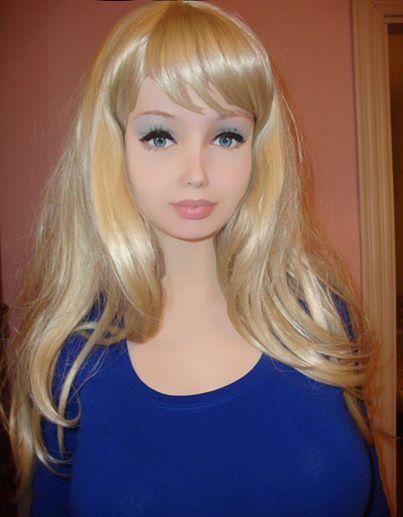

Lauren Tuck
Aug 20, 2014
The Psychology of a 'Human Barbie'
Photo by Lolita Richi/Facebook
Ever since Barbie became one of the world’s most popular dolls, little girls have aspired to be just like the pretty plastic toy. While her body is certainly enviable — flat stomach, long legs, and large chest — her proportions are not only unrealistic, they’re also dangerous to try to emulate. But that hasn’t stopped some individuals — usually grown women — from attempting to be like her. Lolita Richi, a 16-year-old from Ukraine, is the latest (and youngest) “Human Barbie” to emerge.
Lolita has a 20-inch waist, a 32F bra size, and wears color contact lenses to emulate the wide-eyed doll-look of her fictional idol. The teenager insists that she hasn’t gone under the knife and that her photos haven’t been digitally manipulated, but her proportions seem to indicate otherwise. Dr. Anthony Youn, a Michigan-based, board-certified plastic surgeon who has not treated Lolita, told Yahoo Health that it would be “virtually impossible” to look the way that she does naturally.
The high school student isn’t the first person to transform herself into a living Mattel doll. Valeria Lukyanova, 23, is probably the most famous and was recently featured in a GQ profile, while 34-year-old Justin Jedilca is considered to be the “Human Ken doll” and has undergone more than 150 plastic surgeries. But it’s Lolita’s age that makes the whole situation all the more shocking. In the United States, cosmetic procedures cannot be performed on those younger than 18 without parental consent and many doctors simply won't perform elective surgeries on younger patients even with the parents' consent. Youn said he finds it disturbing that another physician would perform these kinds of invasive operations on a child. “She’s not done maturing both physically and mentally,” he added.
Lolita Richi
Photo by Lolita Richi/Facebook
It’s possible that people who aspire to achieve such an exaggerated look are suffering from a form of body dysmorphic disorder (BDD). People who suffer from BDD obsessively think about their real or perceived flaws for hours each day. “When people [with BDD] look in the mirror, they see something different than what everyone else sees,” Youn explained. For example, if a person with BDD has a tiny bump on her nose, she might see it as a much, much larger flaw. In typical cases, patients tend to become exceptionally introverted (even agoraphobic, depressed, and suicidal in advanced cases) but body-image disorders present themselves differently in everyone. For Lolita, and others like her, she presumably believes that changing her appearance in this extreme manner is the only way to look attractive, according to Youn. “A lot of them will go to extremes in a misguided attempt to correct something that wasn’t a problem in the first place,” he said.
Figure alterations to become a Human Barbie could also be considered a type of drastic body modification. Less permanent examples of body modification as a form of expression or art include tongue splitting, implanting horns, and gauging ears. (Though these actions come across as frightening, they are actually reversible, unlike going under the knife in most cases.) The concern with Lolita being a minor is that she’s potentially altering her body in a permanent way that she might not find attractive later.
Even if Lolita’s claims of not having undergone plastic surgery are to be believed, her body image outlook is still a cause for concern. She told Metro U.K. that she started dressing up because she wanted to look perfect and that all women should want to be the same. "People have openly told me that they’re jealous of me and how good I look," she said. Sounds like she definitely still has some growing up left to do.